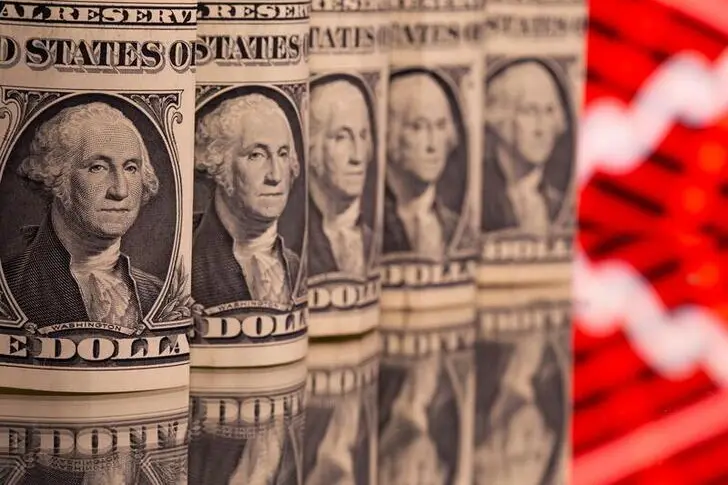PHOTO
NEW YORK - A rethink on when the Federal Reserve will cut interest rates is reverberating through the fixed income market, heightening risk for those betting the explosive rally that took bonds higher at the end of 2023 will continue this year.
Investors piled into Treasuries late last year on expectations that the Fed will cut rates as soon as the first quarter of this year, sending government bond prices roaring back from 16-year lows.
Many are now recalibrating those bets following a blowout U.S. jobs number and a cautious message from the Fed, which last week said the strong economy could spur an inflationary rebound if rates are cut too soon. Yields on the benchmark 10-year Treasury, which move inversely to price, have surged in recent days and now stand 20 basis points above December’s lows.
While investors still expect the Fed to deliver a number of rate cuts this year, they are now less certain of when the central bank will begin lowering borrowing costs and how far rates will fall. Worries over an expected surge of bond supply resulting from government issuance are also sapping bulls’ enthusiasm.
“The combination of the jobs numbers and the Fed press conference has really caused a splintering in the potential outcomes,” said Robert Tipp, chief investment strategist and head of global bonds at PGIM Fixed Income, which manages $794 billion in assets.
He believes 10-year yields this year could approach last year’s high of around 5%, from their current level of about 4.1%.
Futures tied to the Fed’s policy rate late Tuesday showed investors assigning about a 20% chance of the Fed cutting interest rates in March, down from 64% a month ago, CME Group data showed.
Fed Chair Jerome Powell shot down expectations of a March cut at the end of last week's monetary policy meeting, saying officials needed greater confidence that inflation is moving towards its 2% target. He reiterated his views during an appearance on CBS’ "60 Minutes" on Sunday.
The probability of a first rate cut coming in May, meanwhile, has increased to 55% from 37% a month ago. Investors are now pricing in a total of 122 basis points in cuts in 2024, from around 150 in mid-January.
John Madziyire, head of US Treasuries and TIPS at Vanguard, the world’s second-largest fund manager, said that prior to the Fed’s policy meeting last week he expected to “buy the dip” if 10-year yields hit 4.25%.
“Now maybe we'll start scaling in at 4.25% on the view that we could potentially go to 4.5%, pricing a ... higher-for-longer scenario," he said.
For others, the pullback in Treasuries confirmed suspicions that last year’s rally was overdone.
Spencer Hakimian, CEO of Tolou Capital Management, a New York-based hedge fund, has been reducing exposure to long-term Treasuries in recent weeks and added shorter-term ones on expectations of rates remaining elevated for longer than markets had expected.
“We are more exposed to the front end of the curve because we believe there's a lot less interest rate risk there,” he said. The risk of high interest rates reducing the value of a bond's payout is greater for long-duration bonds.
Nearly $2 trillion in expected new U.S. government bond issuance this year is also keeping investors wary, as many believe yields will have to rise in order to attract buyers. U.S. fiscal worries exacerbated the Treasury selloff in October, and rating agencies Fitch and Moody's warned last year about the burden of higher interest rates on state coffers.
Matt Eagan, portfolio manager at Loomis, Sayles & Company, sees 10-year yields at 4.5%, partly because of the expected large government issuance.
So far, the rise in yields hasn’t had much effect on stocks, in contrast with the equity selloff surging Treasury yields set off in September and October. The S&P 500 is up over 4% for the year and stands near a record high.
At the same time, many still believe the direction of travel for rates is lower, as long as inflation remains on a cooling trend. Fed officials in December projected three quarter-point rate cuts this year, forecasts that Powell recently said were still likely in line with policymakers' views.
Strong economic data changes the Fed's timing but not its direction, said Jason Pride, chief of investment strategy at Glenmede.
"It doesn't mean they can't cut rates, it just means their pace is a little slower," he said.
(Reporting by Davide Barbuscia, editing by Ira Iosebashvili and Anna Driver)





















